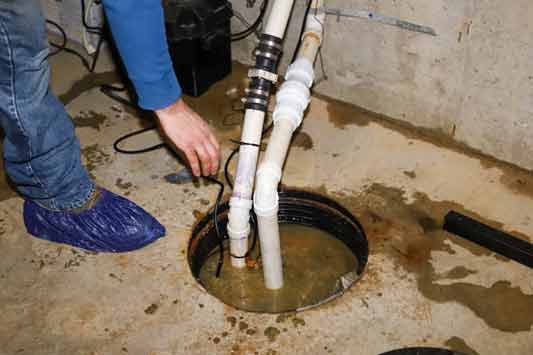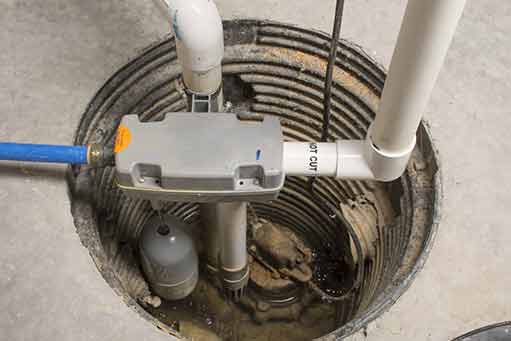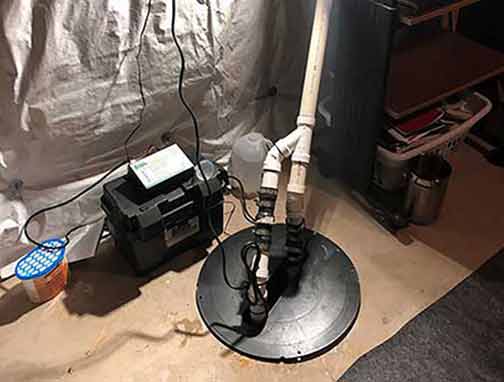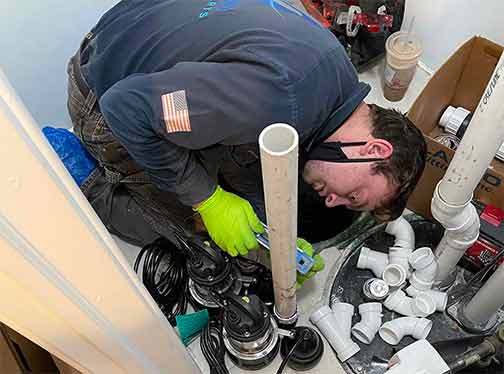
Sump pump problems, like other plumbing issues in your home, are almost unavoidable. But unlike other plumbing issues, Bigham and Associates says, a failed sump pump, if not detected on time, will almost always result in a flooding disaster in your home.
Why is that?
Since sump pumps run themselves, most homeowners don’t see the need to inspect the sump pump to know its condition. As a result, when their sump pump malfunctions, homeowners don’t know that the system is out of order.
This is a major cause of basement flooding in homes where there is a sump pump installed. The mere presence of a sump pump in a home does not guarantee that the house will always be protected from basement flooding.
To keep your home safe from basement flooding, your sump pump must be in good condition at all times. How do you ensure that? You must know the early warning signs that your sump pump is in trouble. We explain those warning signs below.
Early warning signs that your sump pump needs urgent attention
The sump pump makes strange noises
Your sump pump will make some noise whenever it is working; a low humming sound that doesn’t cause discomfort to the people inside the home. If your sump pump starts to make loud noises, there is a problem. The noise could be due to a broken or worn impeller. It could also be because of a damaged motor. If you have this problem, you should get a plumber to repair or replace the sump pump.
The sump pump vibrates excessively
The impeller is a propeller-like device inside the pump that allows it to suck water out of the basin. If there is a problem with the impeller, your sump pump will vibrate excessively or even wobble and bum around every time it is on if this problem is not fixed at once your sump pump will be damaged beyond repair.
The sump pump is rusty
Although sump pumps are constantly exposed to water, this is not the primary reason why a sump pump rusts. Bacteria and corroded batteries are the main reasons why the sump pump may start to rust. Interactions between the iron and bacteria inside water can lead the sump pump to become discolored and eventually rust unless the appliance is properly maintained.
Sump pump cycles frequently
This is mostly an installation problem; perhaps the sump basin is too small for the volume of water entering the basement. Consequently, the sump pit fills up too quickly, forcing your sump pump to power on and off at very short intervals. Frequent on/off cycling will overwork your sump pump and this can eventually cause the motor to fail.
The sump pump doesn’t switch off
The two possible reasons why a sump pump runs for long periods or doesn’t switch off at all are; that the sump pump is not putting out enough power or the float switch is stuck. If the sump is too small for the amount of water it has to pump or the distance it has to pump the water is too long, the sump pump will run for longer periods. If the float switch is jammed the sump pump will not power off.
The sump pump is used infrequently
This problem is not caused by the sump pump. It is a common issue in areas with very long spells of dry weather. If your sump pump goes a long time without working, the risk of all kinds of sump pump issues increases. Blockages in the discharge line or sump pump itself are a common problem in these situations. Mechanical and electrical problems can also happen.
The sump pump doesn’t switch on
This is the ultimate sump pump issue because it deprives your home of the sump pump’s service. Sump pump failure may be due to a burnt motor, wiring issues, or any of the above-mentioned problems. But one of the most common reasons why a sump pump fails is a power outage during a rainstorm or other emergency situations.
To protect your home from these problems, the first step is to test your sump pump regularly. Testing a sump pump is easy; get a five-gallon bucket, fill it with water, and empty it into the sump basin. If the sump pump is okay, it should power up and power off after the water inside the pit has been removed. Do this at least four times a year.
Secondly, you should think of installing a backup battery sump pump in your home. A backup sump pump will stand in for your primary sump pump when the primary pump is out of commission because of a power outage or other problems. To make this arrangement work, your backup sump pump should run on a battery, instead of being connected to the grid.
Lastly, you need to have your sump pump system inspected at least once a year by a qualified plumber. A good plumber will also advise you on additional steps to protect your sump pump from damage and your home from basement flooding. Most of the problems above can be avoided if you inspect your sump pump regularly and have professional maintenance.



